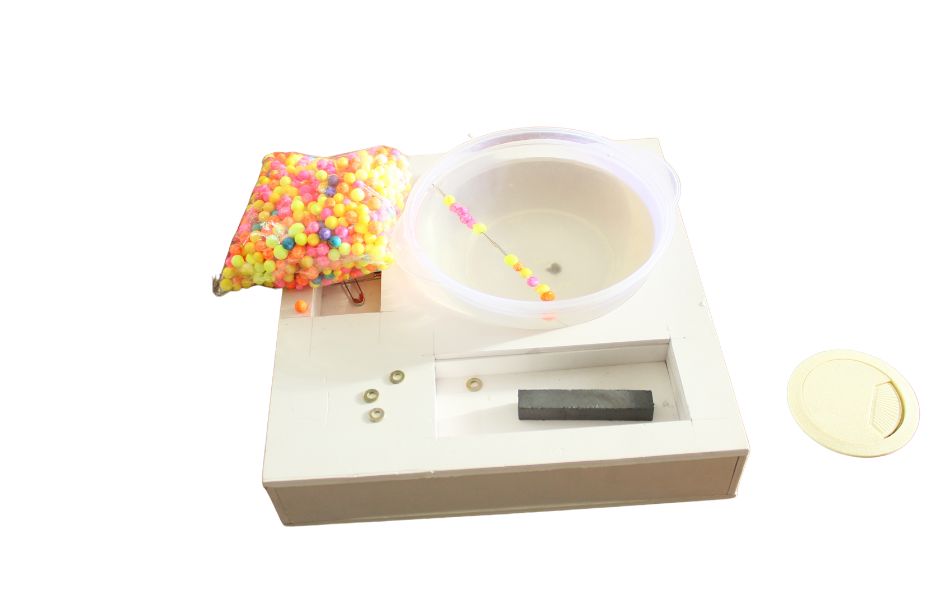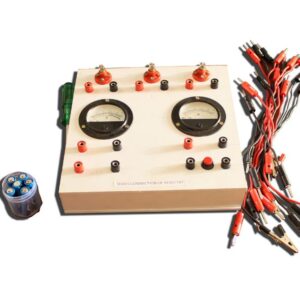MAKE YOUR OWN CELL WITH SALT WORKING MODEL
SCIENCE LAB EQUIPMENT WORKING MODEL / SCIENCE EXHIBITION WORKING MODEL
5 in stock
Refund
Unfortunately, once an order is placed, there is no refund available. However, we do offer exchanges for defective or damaged items.
Due to the nature of our products and the potential for misuse or mishandling, we do not offer refunds. We believe in customer satisfaction and strive to provide quality exchanges for any issues that may arise.
If you have received a defective or damaged item, please contact our customer service team and they will assist you with the exchange process. Please note that exchanges are subject to availability and product conditions.
We do not offer refunds for change of mind purchases, but we do offer exchanges for valid reasons such as defects or damages.
Delivery
My Science Kart delivers orders through a reliable and efficient shipping service to ensure your products arrive safely and on time.
Yes, you can easily track your order from My Science Kart by using the tracking number provided to you once your order has been shipped.
If you have any issues with your order from My Science Kart, please contact our customer service team who will be happy to assist you and resolve any problems.
Payment
You can pay for your purchases on My Science Kart using various payment methods such as credit/debit cards, net banking, UPI’s and mobile wallets.
Yes, we use industry-standard encryption technology to protect your payment information and ensure that it is secure.
If you have any payment-related queries or issues on My Science Kart, you can contact our customer support team through the website or email us at support@mysciencekart.com.
MAKE YOUR OWN CELL WITH SALT
Creating a simple electrochemical cell, also known as a voltaic cell or battery, using common materials like salt is an interesting experiment. Here’s a step-by-step guide to making your own cell with salt:
Materials needed:
1. Two different types of metal electrodes (e.g., copper and zinc, or copper and aluminum)
2. Salt (table salt or sodium chloride)
3. Water
4. Two cups or containers
5. Wires with alligator clips
6. LED bulb or small light bulb
7. Safety gloves (optional)
Instructions:
1. Put on safety gloves if you’re concerned about handling the electrodes or chemicals.
2. Fill two cups or containers with water.
3. Dissolve salt in one of the cups of water to create a salt solution. Stir until the salt is completely dissolved. The concentration of the salt solution can vary, but a few tablespoons of salt per cup of water should be sufficient.
4. Insert one electrode (e.g., zinc) into each cup of water, making sure they are fully submerged. These electrodes will serve as the anode and cathode of your electrochemical cell.
5. Connect one wire with an alligator clip to each electrode. Secure the connection by clipping the alligator clips firmly onto the electrodes.
6. Connect the free end of the wire attached to the zinc electrode (anode) to the positive terminal of the LED bulb or small light bulb using another wire with an alligator clip.
7. Connect the free end of the wire attached to the other electrode (cathode) to the negative terminal of the LED bulb or small light bulb using another wire with an alligator clip.
8. Turn off the lights in the room to better observe the light from the LED bulb.
9. Observe the LED bulb. If the electrochemical cell is functioning properly, the bulb should light up.
Explanation:
In this setup, the salt solution acts as an electrolyte, allowing ions to move between the two electrodes. When the circuit is completed by connecting the electrodes to the LED bulb, a chemical reaction occurs at each electrode. At the anode (zinc electrode), zinc metal undergoes oxidation, releasing electrons. At the cathode (the other electrode), reduction occurs, where the electrons and hydrogen ions from the water and salt solution combine to form hydrogen gas. The flow of electrons through the external circuit generates an electric current, which powers the LED bulb and causes it to light up.
This homemade electrochemical cell with salt demonstrates the basic principles of battery operation and provides a hands-on way to explore electrochemistry.
Precautions:
- Be careful when handling the metal strips and electrolyte solution, as they may be corrosive or conductive.
- Do not touch the metal strips while the cell is operating, as they may become hot or produce electrical shocks.
Conclusion:
Making your own cell with salt is a simple and educational experiment that demonstrates the principles of electrochemistry and electrical energy generation. By using common household materials, you can create a basic battery and explore the fascinating world of electricity and chemistry.
| Weight | 0.5 kg |
|---|---|
| Dimensions | 25 × 25 × 5 cm |
You must be logged in to post a review.
Q & A
Related Products
SEPARATING IRON FROM THE SOIL WORKING MODEL
- ✓ 100% Quality products
RIGHT HAND RULE - 2 WORKING MODEL
- ✓ 100% Quality products
OHM'S LAW WORKING MODEL
- ✓ 100% Quality products
SERIES CONNECTION OF RESISTORS WORKING MODEL
- ✓ 100% Quality products
KIRCHHOFF'S LOOP LAW WORKING MODEL
- ✓ 100% Quality products
ELECTRIC SHOCK WORKING MODEL
- ✓ 100% Quality products
PARALLEL CONNECTION OF RESISTORS WORKING MODEL
- ✓ 100% Quality products
MULTIMETER
- ✓ 100% Quality products
Product categories
- Circuits & Projects 233
- My Science Kart 665
- Raw Materials For Projects & Lab Equipments 381
- Science Exhibition 516
- Science Exhibition Projects & Working Models 344
- Biology Science Exhibition Projects & Working Models 31
- Chemistry Science Exhibition Projects & Working Models 12
- Mathematics Science Exhibition projects & Working Models 7
- Physics Science Exhibition Projects & Working Models 129
- Robotics Science Exhibition Projects & Working Models 23
- Social Science Exhibition Projects & Working Models 20
- Science Lab Equipments With Working Models 363
Cart
TRULY INDIAN EDUCATION BRAND
Over 10,000+ Happy Customers
My Science Kart
Address:- Ground floor, Lakshmi Nagar, D.No:- 40-1/1-5, PVP Mall Backside, Mogalrajapuram, Labbipet, Vijayawada, Andhra Pradesh 520010
7673977997, 0866-3543677
mysciencekart@gmail.com
Categories
MAP
© My Science Kart 2024, Designed & Developed By Synfocy Tech Solutions























Reviews
There are no reviews yet